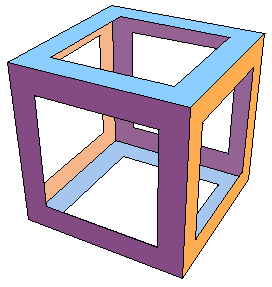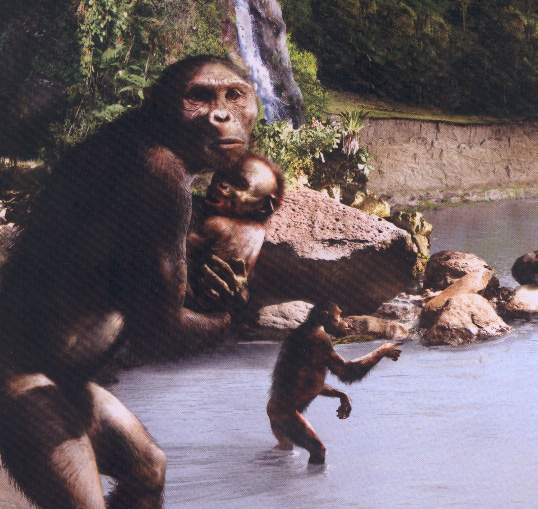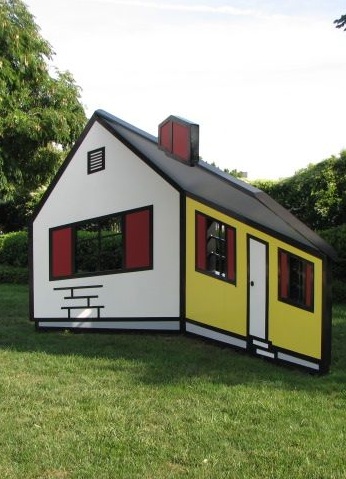 ....
Visualization
....
VisualizationNavigating the site:
![]()
Paz, Octavio
 Visualizations: The nature book of Art and Science,
Visualizations: The nature book of Art and Science,
U. of California Press, 2000.
by Martin Kemp
 |
|
| Contents |
|
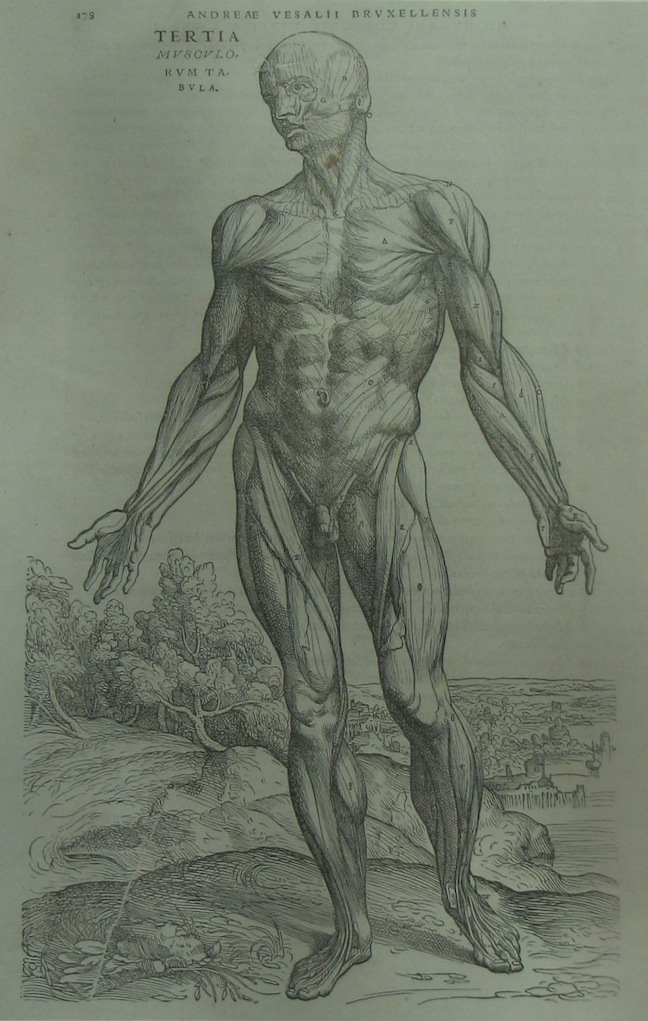 |
|
 |
Writing | Visualization means? | Science index | Government | Ecology | Feedback | Museums | Technology
New nature index
"Every act of perception is necessarily a highly directed and selective affair, whether the guiding principles are conscious or inadvertent."
"Our view of the realities outside us is structured in relation to existing deposits of perceptual experience, pre-established criteria of interpretation, new and old acts of naming and classification, the physical parameters of our sensory apparatus, and, above all (or underlying all), deep structures operating at a pre- or sub verbal level."
"the hard elements exceed the divergent ones."
"definable elements in the structure and behavior of the physical world."
p. 1, Introduction.
Mona Lisa's lessons, she is nicknamed La Giocanda, "every painted effect was, in theory, based on a natural law."
Leonardo da Vinci
"The woman and the landscape stand in profound harmony to each other and to the laws that govern the physical world."
- light on surfaces
- the formation of spiral configurations
- human flesh and bones (new findings)
- the 'body of the earth."
- "The intensity of light on a plane is proportional in the angle of impact of the light on that plane." Direct lighting produces clearer images than indirect lighting.
- "A helix arises from the combination of two components of a straight axis corresponding to a linear motion or a weight acting in a vertical direction : and a circular motion or shaping force in a plane perpendicular to that axis."
- "The relative positions of the sphere of water and the 'body of the earth' are constantly in flux,' [ flux meaning in motion. ]
- "The body of the human being as a microcosm or 'lesser world' is vivified by the pulsing of the blood in its vessels just as the 'body of the earth' is given life by the waters that ebb and flow across and within it." Human microcosm.
p. 13.
"the quest for an art that would be universal," was a passion of Leonardo and Dürer.
Albrecht Dürer's depiction of the art of accurate representation.
Spatial Visions
"A historian of visual representation has an essentially easy task in choosing the most decisive act in the development of the kinds of naturalistic images with which we are constantly regaled in the media. However, the two seminal works which testify to this act are irredeemably lost. When, probably before 1413, Filippo Brunelleschi painted two demonstration panels to show how to represent space and objects on a two dimensional surface according to the systematic optical rules of perspective, he was establishing a mode of depiction that was ultimately to affect the conveying of visual imagery in virtually every field of artistic, scientific, and technological activity. When we look into the implicit 'boxes' of space behind the screens of our televisions or computers, we are distant legatees of Brunelleschi's vision."
p. 28.
"Linear perspective, as we have seen, is about the portrayal of the position and relative scales of objects in Euclidean Space."
"Yet in its pictorial mode, it creates and illusion which can only be used to provide measured definition of the dimensions of forms if the diminutions are reversed. . . . "
"Isometric perspective, set the vanishing point at a notationally infinite distance, in such a way that parallels do not converge, and distant forms can be measured on the same scale as adjacent ones.
Gaspard Monge . . . revived the power of drawn geometrical procedures after years of dominance by algebraic analysis in the Cartesian manner. "
pp. 60-61.
Man and Beast
"We have inherited a notably persistent image of 'primitive man.' 'He' is characteristically hairy, raw boned , mighty in hand and foot , and endowed with a prognathous jaw. The basics of this stereotype. . . . "
 Nature on the Move
Nature on the Move
"For a 52-year old painter who specialized in illustrating plants and insects to undertake a self-financed sea voyage to Surinam in 1699 to document the metamorphosis of exotic butterflies and moths is remarkable enough. For a woman accompanied only by her 21-year old daughter, it represents one of the most heroic acts in the history of the natural sciences. Maria Sibylla Merian of Frankfurt was an extraordinary woman,She was also responsible for the forging of a new vision of how the life-cycles of insects could be brought before our eyes."
The artist opens up ways to envision the reality of motion or change.
p. 47.
Space and Time
"A new art for a new age. Such was the refrain that ran through the avant-garde, from the time in the nineteenth century when Baudelaire announced his search for a 'painter of modern life.' By 1900, the 'modern life' was being defined by the remorseless spread of the new technologies of energy, transport, and communication and by revolutionary notions of the human mind and of time and space. Cubism seemed to provide an art that embraced the new situation."
p. 98.
Making Models
"For (Joseph) Albers, such attempts to construct a precise science of 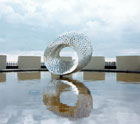 colour could inform practice but never provide absolute prescriptions for making works of art."
colour could inform practice but never provide absolute prescriptions for making works of art."
p.115.
"As knowledge of molecular structure has entered worlds which are impossible to 'see' in any normal sense, analogies with objects within our normal range of visual experience have lost none of their efficacy as aids to visualization, even if the metaphysical and religious dimensions have retreated."
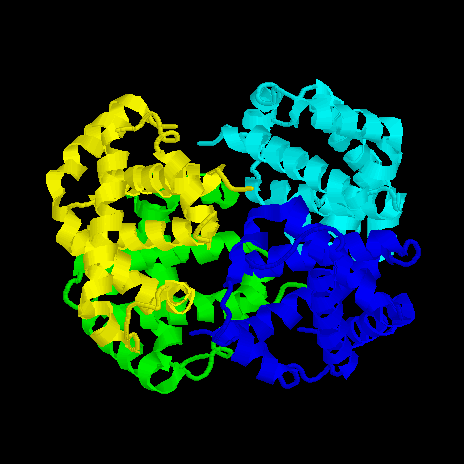
One of the most spectacular acts of modeling was initiated in 1937, when Max Perutz's work on hemoglobin. As Perutz graphically recalled, , 'the first protein structures revealed wonderful new faces of nature." He needed to reveal these faces --graphically and not mathematically. p. 120
The Haemoglobin molecular cluster
New Worlds Revealed
 "Given that the greater part of our planet is deeply covered with water, most of its topography is not visible to us. It is only since the Second World War that we have begun to scan the uncharted depths."
"Given that the greater part of our planet is deeply covered with water, most of its topography is not visible to us. It is only since the Second World War that we have begun to scan the uncharted depths."
 "...Involves considerable visual agility."
"...Involves considerable visual agility."
"Navigating through the the landscape, devoid of the recognizable features of our human terrain, demands hugely disciplined scrutiny , the cultivation of visual memory, and considerable perceptual control. ... Newly accessible territories are yielding their secrets through the ingenious reapplication of enduring visual habits."
pp. 140-141.
Process and Patterns
"Residues of memory are central to (Cornelia) Parker's associative properties. She is concerned to arouse our contemplation of the acts and processes that have deposited what we now see." p. 146
Figure 1. A photograph of the remains of a Greek calibrating device with hand driven gears, used to determine the changing positions of the planets in the sky during the course of any year. That includes years past or years into the future. Called the Antikithera device because it was discovered submerged off of the island of Antikithera (across from Kithera) in a wrecked trading ship.
Cementing Relationships: Civil-engineer have long been familiar with how granular materials –such as sand, soil, or cement powder– pile up. The simplest and most important feature is the existence of a 'critical angle'. Depending on the nature of the granular material, there is a steeper slope that it can sustain without collapsing. This slope runs at a constant angle,with the ground – the critical angle. If you keep piling sand higher and higher . . . the slope of the sand pile will steepen until it reaches the critical angle. . . . The resulting 'steady-state' shape, in the simplest model, is a cone whose slope is A = exactly that of the critical edge.
p. 150
pattern. This is a site that discusses the underlying and more obvious patterns to look for in the world we inhabit.
People, places and publications
"The currently fashionable rhetoric of scientific imagery appear in conveniently exaggerated form in the advertisements. Polished photographs of equipment and eager operatives feature prominently, with a lacing of more technical images, such as graphs and the double helix (which must hold the advertisers' record for graphic popularity in this decade)."
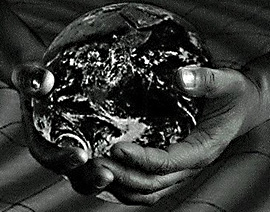 Microcosm means that something that is smaller stands in place of --for purposes of comparing to elicit some meaning-- the larger and often less comprehensible thing. The human body stands for the solar system, for example with the sun at the heart or core of the planets (a poor analogy, in that it is not exact,but it shows a comprehensibly smaller thing representing the larger) The use of a miniature model to explain a larger set of operationally related, often complex, systems.
Microcosm means that something that is smaller stands in place of --for purposes of comparing to elicit some meaning-- the larger and often less comprehensible thing. The human body stands for the solar system, for example with the sun at the heart or core of the planets (a poor analogy, in that it is not exact,but it shows a comprehensibly smaller thing representing the larger) The use of a miniature model to explain a larger set of operationally related, often complex, systems.
Early in human history, for example, the planets where thought of as deities or in Greece as Titans and gods. The influence here was largely Sumerian. Residents of the Tigris and Euphrates river valleys, often called the "cradle of civilization" thought of the stars as the campfires or signal fires of distant warriors for whom they treated as heros and bearers of certain cultural arts, such as painting, ceramics or metal making, to their ancestors. The idea was among early alchemists that the smaller earthly characteristics stood for, represented or were reflections of larger forces in the sky.
The analogy is: |
||
| macrocosm. | microcosm. | |
Sky above |
Earth below |
|
| large, immense, big. | small, miniscule, tiny | |
star |
fire |
Comparisons look for similarities and contrasts look for differences. Both of these strategies are used to determine more clearly what something means, to show relationships among related concepts, or to extend ideas so that one demonstrates increased understanding of how meaning changes with respect to the context of a word.
concepts in relation to technology
The simple word "fiddle," for instance means, 1) to play the violin, 2) to tinker with a device, or 3) to become absorbed in the trivial while more important matters are ignored. Thus, it is the context that allows this word to virtually change its meaning to a completely opposite intent.
Here the word mean, or means refers here to a definition, or "indicates, represents, or explains, conveys or expresses" a significance.
As opposed to the means "or manner of doing something, or way to achieve an end purpose or outcome," the word "means" has a certain context which imparts a different definition to the intent of the word depending on the situation or context.
meaning in relation to technology
Nothing is what it is.
Nothing is what it appears to be.
What does "visualization" mean besides being able to see what someone means?
"If that seems like a fine point, it is one that escaped scientists who developed PET and fMRI (functional magnetic resonance imaging) scanning technologies, as well as the medical personnel who use those diagnostic tools everyday without knowing exactly what the images represent. PET and fMRI are not recording neural activity directly, but rather surrogates for activity -- changes in blood flow (in the case of PET) and blood oxygenation (fMRI) -- Kasischke explained. He compares PET and fMRI scans to pictures from cameras with slow shutter speeds and wide-angle lenses, producing a broad view over a relatively lengthy time span. A very different picture emerges from multiphoton microscopy, which can record millisecond changes in microscopic detail. The ultra-fast microscopic technique can image individual nerve cells and even their finest extensions, where important steps in brain-cell metabolism take place."
"Multi-photon microscopy scans by Cornell University biophysicists of living brain tissue, as reported in the latest issue of Science (July 2, 2004)."
THURSDAY, JULY 1, 2004,
Brain Chemistry and laser microscopy
Stieglitz & O'Keeffe revolutions in photography and art
NASA visual photographic library
perspective in renaissance art
Subject index for visually related pages.
"The clarification of visual forms and their organization in integrated patterns as well as the attribution of such forms to suitable objects is one of the most effective training grounds of the young mind."
—Rudolph Arnheim, Visual Thinking.
In his 1997 article Thoughts on Visual Literacy, Philip Yenawine describes visual literacy as
"…the ability to find meaning in imagery."
√
Visual literacy ". . . involves a set of skills ranging from simple identification (naming what one sees) to complex interpretation on contextual, metaphoric and philosophical levels.
√
Many aspects of cognition are called upon, such as personal association, questioning, speculating, analyzing, fact-finding, and categorizing. Objective understanding is the premise of much of this literacy, but subjective and affective aspects of knowing are equally important."
A
• ABCs
• Abrupt climate change picturing scientific facts
• Airs, Waters, & Places
• atmosphere
• atmospheric vapor composition
- Biology: changes in worldview concerning life sciences.
- biological game of life is a very different view of nature.
- Biological diversity explained in detail.
- Blake, William; poetry of cosmos
- Body of knowledge (corpus), what is it?
- Bronowski, Jacob; Science and Human Values, notes
- Buffers, what are vegetational screens?
- Carbon dioxide as a critical control element
- Caribbean history, definition of the region
- Caribbean a summary.
- Caribbean study guide
- Charette, what is it and how is it used?
- Climate change, a guide to pages related to global warming, the issue examined and discussed.
- Comedians, The; a novel by Graham Greene set in Haiti
- Common Ecological Problems, What precisely is one
- Commons, what is a common property resource?
- Complexity of nature and the biosphere.
- Concepts explained and tied to essays.
- Criteria, defining
- Crosby, Alfred; The Columbian Exchange, themes and thesis
- Cybersex
- Darwin the person
- Darwinian Evolution or as a revolution
- Determining the verity, or veracity of knowledge.
- Dialogue in technology and techniques
- Distinguishing ideas from images.
- Diversity, Edward O. Wilson on biological diversity as a measure of wealth.
- Demographic index to related information on population.
- Design, ecological principles of
- Dozen levels of material existence's organization
Ecology
- Bio dynamic aspects of ecology.
- Ecolate living, what it means
- Ecological biotic community: examined and defined
- Ecological design elements
- Ecological Problem, What precisely is one?
- Ecological subjects connected at this location; three laws
- Ecological Thought as it developed from 1700-1970
- Ecology, definition, examples, commentary and links
- Ecology used as a model of relations among integrated parts : Carolyn Merchant's idea of ecological revolutions as they impact and are influenced by a set of biological, economic, social, political and institutional relationships
- End of Nature, Bill McKibben
- Exchange is a node for other important links on this site.
- Externality defined
- Fall of Icarus
- Feedback is defined and examples of how it is used in these pages is explained.
- Fifth dimension
- five
Scientific Revolutions
- Florida's trees and their varieties are discussed.
- Forests and the importance of forestry for the health of the world, human economies and the ecosystem is explored.
- Gardens
- Genetics, topics on
- Genetics
the history of in brief
- Global security and ecology, Kennedy and Dodds conclusions
- Government agencies that have an environmental regulatory, scientific research, or a biological monitoring role to play are listed here.
- Hawking's theory, Stephen Hawking and The Theory of Everything.
- Human Genome
- Hydraulic society, water and its meaning for civilization.
- Images
and ideas.
- Intelligence is described as a variety of educated responses to the world, people, places and things around you.
- Islands in the Stream
- Islands in the Stream course index
- Knowledge
- Labyrinth of Solitude, by Octavio Paz
- Land and Technology, Arnold Pacey on Meaning
- Land, what is it?
- Marshes of the Ocean Shore, digest of key ideas.
- matrix is a site that explains what a table or matrix is by demonstrating the use of a categorical framework within which to express your ideas comprehensively.
- McHarg, Ian, his Book on Design with Nature
- Measure, the veracity of statements is tested by these criteria
- Mercury and ecological accounting in natural systems
- Message, staying focused on a point in advocating a position.
- Methods: these are two related pages that discuss, examine in some detail and diagram the means we have from distinguishing facts from opinions. See also certainty, science, and vocabulary.
- Model here is a schematic diagram of ecological relationships in any place.
- Ockham's Razor, the importance of avoiding pleonasm in your writing!
- On the Origin of Species, by Charles Darwin; notes on critical passages
- Paz, Octavio, summary and interpretation
- Problem Solving
- Population
momentum, discussed here in terms of what the ideas were about growth
in 1966, remarks made in a Senate hearing on global population problems
and some fanciful ideas on how to pay for growth.
- Research Guide to other web sites for useful information
- Research; reliable sources on on the internet for you to use.
- Revolutions in science, meaning and worldview
- Rules of ecology; simply stated
- Scale and levels of organization in nature.
- Science is defined and analyzed here as one of several linked pages. Science is not however technology, though they are related.
- Science as a pyramid of how we know things
- Science related topic index
- Science, Revolutions in and ideas
- Science texts, writing about the contemporary worldview
- Survival
kit for all classes.
Technology is discussed and examined as the means
we have to solve the apparent difference between an existing and a desired
state of affairs or conditions.
- Technology is defined here as the application of knowledge to human affairs.
- Temperature is rising on the Earth's surface
- The Double Helix, by James Watson, notes
- Tools are the items used to identify and understand the power of technology and the techniques we use. Some synonyms for tools are: apparatus, devices, gadgets, implements, instruments, machinery, materials, robots.
- Uncertainty in science, a valued role to play.
- Value defined
- values with respect to land
- Verity, or veracity, Determining the reliability of information.
USA map of the country from a satellite image (mosaic) taken in 1990 from the USGS.- Water & hydraulics, their role in sustaining life & civilization
- What precisely is an Ecological Problem ?
- When writing, there are 4 things to always consider
- Writing Criteria: listed as a form for your to review
- Writing, or Free writing in class
- Writing about Science as a means to measure your critical thinking.
Words; the importance of accurate expression and the appropriate choice of terms is examined here. Eight of the most important terms for my courses are defined here, as well as on other pages.
Worldview is discussed and analyzed at some length and a detailed discussion of ignorance and certainty as these ideas relate to knowledge, use of evidence and specific lessons is at this site.
- Worldview, changes in the Life Sciences, (1859)
- Worldviews are simply described here as ways of knowing our mistakes.
- X Chromosome
- Zeitgeist
![]() Martin Kemp. Visualizations: The Nature book of Art and Science. Berkeley: University of California Press, 2000.
Martin Kemp. Visualizations: The Nature book of Art and Science. Berkeley: University of California Press, 2000.
Words as signs | Hunter S. Thompson | Word webs | Basic words | Advanced words | Terms | Antonyms | Synonyms


